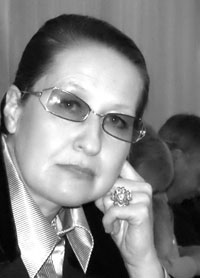NORMOBARIC HYPOXIC TRAINING MODEL FOR YOUTH BENCH SHOOTING SPORT: EFFECTS ON INTELLECTUAL EFFICIENCY VERIFIED BY PSYCHO-PHYSIOLOGICAL FUNCTIONALITY TESTS
Ключевые слова:
normobaric hypoxia, intellectual efficiency, bench shooting.Аннотация
Objective of the study was to analyze benefits of normobaric hypoxic training model for intellectual efficiency in youth bench shooting sport using psycho-physiological functionality tests.
Methods and structure of the study. The study was run at the N.I. Volkov Sports Biochemistry and Bioenergetics Department Laboratory of Russian State University of Physical Education, Sports, Youth and Tourism (SCOLIPE). We sampled junior bench shooters (n=40) on their informed written consent and split them up into RG (trained traditionally) and EG (trained using hypoxic training method). The normobaric hypoxic training model implied a 30-minute inhaling of a gas mixture in a quiescent state using Everest-1 (model 7) Hypoxic Trainer system that generates 10-plus l/min of the gas mixture with 10-16% of oxygen. The sample was tested by computerized Sports Psycho-physiologist Test System to generate a range of psycho-physiological test rates including intellectual efficiency.
The Sports Psycho-physiologist Test set included: the angular speed valuation; segments valuation; segments metering; angle valuation; and angle perception tests; plus the following sensorimotor response tests: right hand: response to light time; response to sound time; choice reaction; right leg response to light time; response to sound time; and right hand / right leg tapping test; and the left hand response to light time; response to sound time; choice reaction; left leg response to light time; response to sound time; and left hand / left leg tapping test. The tests were designed to prevent the monotony-related fatigue.
Results and conclusion. The tests and analysis found the key variations in the psycho-physiological test rates with hypoxic training in the junior bench shooting sample. We found that the hypoxic training tends to speed up some sensorimotor responses and slow down a few motor functions. The test data arrays showed both positive and negative aspects of hypoxic training on the psycho-physiological functionality. The study findings may be recommended for consideration in the initiatives to use hypoxic training as an ergogenic tool in the bench shooting training systems.
Библиографические ссылки
Kolchinskaya A.Z. Kislorod, fizicheskoe sostoyanie, rabotosposobnost [Oxygen, physical condition, working capacity]. Kiev: Nauka dumka publ., 1991. 208 p.
Volkov N.I., Voytenko Yu.L., Tambovtseva R.V. et al. Problemy ergogennykh sredstv i metodov trenirovki v teorii i praktike sporta vysshih dostizheniy [Problems of Egogenous Methods and Techniques of Training in Theory and Practice of Elite Sport]. Teoriya i praktika fiz. kultury. 2013. no. 8. pp. 68-72.
Sechin D.I., Danilov D.V. Analiz megastruktury podgotovki vysokokvalifitsirovannykh strelkov v transheynom stende [Analysis of megastructure of elite shooters training in trench stand] Sovremennye tendentsii i aktualnye voprosy razvitiya strelkovykh vidov sporta [Modern trends and topical issues in development of shooting sports]. Proc. III national with international participation research-practical conf. dedicated to the 40th anniversary of VSIPC, Voronezh, June 05 2019. O.N. Savinkova, M.M. Kublanov [ed.]. Voronezh: Elist publ., 2019. pp. 45–49.
Sechin D.I., Tambovtseva R.V. Gipoksiya kak faktor intensifikatsii slozhnokoordinatsionnoy deyatelnosti v sporte [Hypoxia as factor of intensification of complex coordination activity in sports]. Sovremennye voprosy biomeditsiny. 2020. V. 4. No. 1 (10). pp. 3–11.
Tambovtseva R.V., Voytenko J.L., Laptev A.I. et al. Effektivnost ergogennogo vozdeystviya normobaricheskogo gipoksicheskogo stimula na rabotosposobnost sportsmenov [Efficiency of ergogenic influence of normobaric hypoxic stimuli on athletes’ performance]. Teoriya i praktika fiz. kultury. 2020. No. 5. pp. 61–63.

Опубликован
Как цитировать
Выпуск
Раздел
Лицензия

Это произведение доступно по лицензии Creative Commons «Attribution» («Атрибуция») 4.0 Всемирная.
